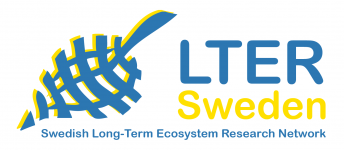LTER Sweden
General Information

Web Address
Description of Network
LTER-Sweden was founded in June 2010, and adopted by LTER-Europe and ILTER in August 2010. LTER-Sweden is based on a number of established and running instrumented stations for ecological research and monitoring. The stations represent several universities and research organisations. The Swedish network is built on the bottom-up principle, where individual sites form the basis of the network, and a central secretariat coordinates national activities and contacts with the European and International mother LTER organisations. The main objective is to bring Swedish field research stations together to be able to perform research on a larger scale than what is possible at the individual station. LTER Sweden cooperates with SITES which is another national network for selected research stations.
Belongs to
Verified member sites
19 sites:
| Lönnstorp Research Station (LTER_EU_SE_020) |
| Ore estuary (Orefjarden), Umea Marine Sciences Centre (LTER) (LTER_EU_SE_009) |
| Röbäcksdalen Field Research Station (LTER_EU_SE_022) |
| Siljansfors Experimental Forest (LTER_EU_SE_013) |
| Skogaryd Research Catchment (LTER_EU_SE_019) |
| Svartberget Research Station (LTER_EU_SE_006) |
| Tarfala Research Station (LTER_EU_SE_23) |
| Tönnersjöheden Experimental Forest and research station (LTER_EU_SE_007) |
| Vindelfjällens Research Station (Vindelfjällens forskningsstation) (LTER_EU_SE_015) |
Observed Properties
| ammonium nitrogen content | Researched by 1 sites |
| vegetation layer type | Researched by 1 sites |
| incoming radiation intensity | Researched by 1 sites |
| radiation below canopy intensity | Researched by 1 sites |
| soil organic residual | Researched by 1 sites |
| current speed | Researched by 1 sites |
| root density | Researched by 1 sites |
*This page is generated automatically using the available information in DEIMS-SDR describing the sites in this network/RI. Sites that are not documented on DEIMS-SDR are not featured on this page. We cannot therefore guarantee that this page will always reflect the actual list of sites for the network/RI.